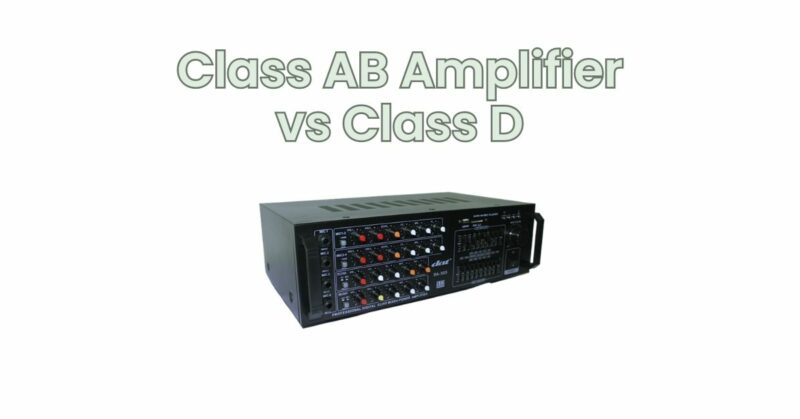When it comes to audio amplification, two popular amplifier classes are Class AB and Class D. Each class has its unique characteristics, advantages, and applications. In this article, we will compare Class AB and Class D amplifiers, examining their performance, efficiency, sound quality, and suitability for various audio setups.
Class AB Amplifiers: Class AB amplifiers combine elements of Class A and Class B designs, striking a balance between audio fidelity and efficiency. Here are key features of Class AB amplifiers:
- Performance and Sound Quality: Class AB amplifiers are known for their excellent audio fidelity and low distortion. They provide accurate and detailed sound reproduction across the frequency spectrum, making them well-suited for critical listening applications. With their low crossover distortion, Class AB amplifiers offer smoother transitions between positive and negative signal cycles, resulting in a more natural and transparent sound.
- Efficiency: Class AB amplifiers are less efficient than Class D amplifiers. They operate in a linear mode, drawing some power even when there is no input signal. However, they are more power-efficient than Class A amplifiers, as they consume less power during idle or low-level listening conditions. Class AB amplifiers are commonly used in home audio systems, studio monitors, and applications where a balance between power efficiency and audio quality is desired.
- Heat Dissipation: Due to their linear operation, Class AB amplifiers generate more heat compared to Class D amplifiers. This heat dissipation requires larger heat sinks and cooling mechanisms to maintain optimal performance. It is important to consider proper ventilation and cooling when using Class AB amplifiers.
Class D Amplifiers: Class D amplifiers, also known as switching amplifiers, offer high efficiency and compact size. Here are key features of Class D amplifiers:
- Performance and Sound Quality: Class D amplifiers have evolved significantly over the years, providing excellent sound quality and low distortion. They utilize pulse-width modulation (PWM) to convert the input audio signal into high-frequency digital pulses. These pulses are then amplified by switching the output transistors on and off rapidly. While early Class D amplifiers were criticized for their audio quality, modern designs have achieved remarkable improvements in fidelity and accuracy.
- Efficiency: Class D amplifiers are highly efficient, often exceeding 90% efficiency. Their digital switching nature minimizes power dissipation, resulting in less heat generation. This efficiency makes Class D amplifiers ideal for portable audio devices, car audio systems, and applications where power efficiency and compact size are crucial factors.
- Compact Size: Class D amplifiers are more compact and lightweight compared to Class AB amplifiers. Their high efficiency allows for smaller heat sinks and power supply requirements, making them suitable for space-constrained installations or portable audio setups.
- Frequency Response and Power Handling: Class D amplifiers typically have a wide frequency response and can handle high power levels. They are well-suited for driving subwoofers and speakers that require significant power, delivering impactful and dynamic bass reproduction.
Conclusion: Choosing between Class AB and Class D amplifiers depends on your specific audio requirements, preferences, and application. Class AB amplifiers provide excellent audio fidelity, low distortion, and a balance between efficiency and performance. They are ideal for critical listening applications and setups that prioritize audio quality. On the other hand, Class D amplifiers offer high efficiency, compact size, and improved sound quality compared to earlier designs. They are suitable for portable audio devices, car audio systems, and applications where power efficiency and space constraints are important.
Consider your priorities, such as audio fidelity, efficiency, power requirements, and installation limitations, when selecting an amplifier class. Both Class AB and Class D amplifiers have their strengths and applications, andthe right choice depends on your specific needs and preferences. It is recommended to audition different amplifiers and consult with audio experts to make an informed decision based on your unique audio setup and listening goals.

